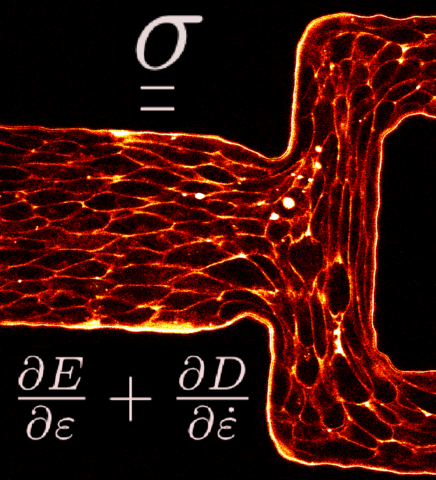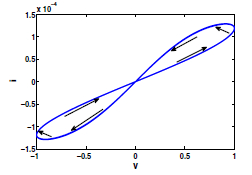News
EPJ D Colloquium - Recent advances in the application of the Schwinger multichannel method with pseudopotentials to electron-molecule collisions
- Details
- Published on 18 June 2015

A new Colloquium paper published in EPJ D describes recent advances in the use of the Schwinger multichannel method and considers potential future applications of the technique. Based on the Schwinger variational principle for the scattering amplitude, the Schwinger multichannel method was designed to account for exchange, polarization and electronically multichannel coupling effects in the low-energy region of electron scattering from molecules with arbitrary geometry.
EPJ B Colloquium: Large scale simulations on GPU clusters
- Details
- Published on 15 June 2015

Graphics Processing Units (GPU) are currently used as a cost-effective platform for computer simulations and big-data processing. Large scale applications require that multiple GPUs work together, but the efficiency obtained with cluster of GPUs is, at times, suboptimal because the GPU features are not exploited at their best.
EPJ B Colloquium: Ceramics in art and archeology
- Details
- Published on 26 May 2015

Analytical techniques, originally developed for traditional materials, turn out to be very useful to study the composition and structure of artistic and historical specimens. But the reverse is also true. The study of ancient artefacts is providing interesting insights of more general interest to materials scientists, as well as inspiration for current artists.
EPJ E Highlight - How supercooled water is prevented from turning into ice
- Details
- Published on 20 May 2015

Calculating the energy barrier that keeps liquid water below zero from immediately turning into ice provides the key to understanding its ability to be compressed as temperature drops
Water behaves in mysterious ways. Especially below zero, where it is dubbed supercooled water, before it turns into ice. Physicists have recently observed the spontaneous first steps of the ice formation process, as tiny crystal clusters as small as 15 molecules start to exhibit the recognisable structural pattern of crystalline ice. This is part of a new study, which shows that liquid water does not become completely unstable as it becomes supercooled, prior to turning into ice crystals. The team reached this conclusion by proving that an energy barrier for crystal formation exists throughout the region in which supercooled water’s compressibility continues to rise. Previous work argued that this barrier vanished as the liquid gets colder. These findings have been published in EPJ E by Connor Buhariwalla from St. Francis Xavier University in Antigonish, Canada and colleagues.
EPJ E Colloquium – The importance of rheology in tissue development
- Details
- Published on 20 May 2015

Our understanding of biomechanics increasingly improves through the use of physics models. There are some intriguing biological questions regarding the interplay between the behaviour of cells and the mechanics at the level of tissues. For example, how does a collective behavior, not apparent at the cell scale, emerge at the tissue level? Or how can the mechanical state of a tissue affect the cell division rate or the orientation of cells undergoing division?
The authors of this new EPJ E Colloquium entitled “Mechanical Formalism for Tissue Dynamics” think that the interplay between genes and mechanics is key to understanding how the adult shape emerges from a developing tissue.
EPJ B Colloquium: Evolutionary Games on Multilayer Networks
- Details
- Published on 19 May 2015

Networks of networks, or multilayer networks, are a fitting description of social systems. Small and seemingly irrelevant changes in a network can have catastrophic consequences in another network. Moreover the structures of networks are relevant to the evolution of cooperation.
In this EPJ B colloquium, devoted to evolutionary games on multilayer networks, Zhen Wang and colleagues take into consideration the implications of the fact that humans are usually members of multiple social networks and conclude that the evolution of cooperation is one of the main pillars of modern human societies.
EPJ B Highlight - Electricity generating nano-wizards
- Details
- Published on 13 May 2015

Quantum dots are an ideal nanolab to study the means to turning heat into electricity
Just as alchemists always dreamed of turning common metal into gold, their 19th century physicist counterparts dreamed of efficiently turning heat into electricity, a field called thermoelectrics. Such scientists had long known that in conducting materials the flow of energy in the form of heat is accompanied by a flow of electrons. What they did not know at the time is that it takes nanometric-scale systems for the flow of charge and heat to reach a level of efficiency that cannot be achieved with larger scale systems. Now, in a paper published in EPJ B Barbara Szukiewicz and Karol Wysokiński from Marie Curie-Skłodowska University, in Lublin, Poland have demonstrated the importance of thermoelectric effects, which are not easily modelled, in nanostructures.
EPJ D Highlight - Organic nanoparticles, more lethal to tumours
- Details
- Published on 13 May 2015

Carbon-based nanoparticles could be used to sensitize cancerous tumours to proton radiotherapy and induce more focused destruction of cancer cells, a new study shows
Radiotherapy used in cancer treatment is a promising treatment method, albeit rather indiscriminate. Indeed, it affects neighbouring healthy tissues and tumours alike. Researchers have thus been exploring the possibilities of using various radio-sensitizers; these nanoscale entities focus the destructive effects of radiotherapy more specifically on tumour cells. In a study published in EPJ D, physicists have now shown that the production of low-energy electrons by radio-sensitizers made of carbon nanostructures hinges on a key physical mechanism referred to as plasmons—collective excitations of so-called valence electrons; a phenomenon already documented in rare metal sensitizers. This reseach was conducted by Alexey Verkhovtsev, affiliated with the MBN Research Center in Frankfurt, Germany and A.F. Ioffe Physical-Technical Institute in St Petersburg, Russia and an international team.
EPJ A Highlight - A new generation of chiral nuclear forces
- Details
- Published on 11 May 2015

Chiral effective field theory provides a systematically improvable perturbative approach to deriving nuclear forces in harmony with the symmetries of Quantum Chromodynamics. Combined with modern few- and many-body methods, this framework represents a commonly accepted procedure for ab initio studies of nuclear structure and reactions.
In this paper, the authors introduce a new generation of nucleon-nucleon forces up to fourth order in the chiral expansion. By employing an appropriate regularization in coordinate space, which maintains the analytic structure of the amplitude, the authors succeed in significantly reducing the amount of finite-cutoff artefacts. In addition, a simple approach to estimating the theoretical uncertainty in few- and many-nucleon calculations from the truncation of the chiral expansion is formulated. By calculating various two-nucleon scattering and bound-state observables, the authors verify that the results at different chiral orders and for different values of the regulator are indeed consistent with each other and with the experimental data.
The new generation of chiral nuclear forces is expected to provide an excellent starting point for applications in nuclear physics.
EPJ B Highlight - Brain learning simulated via electronic replica memory
- Details
- Published on 08 May 2015

A new study shows how a new way of controlling electronic systems endowed with a memory can provide insights into the way associative memories are formed by mimicking synapses
Scientists are attempting to mimic the memory and learning functions of neurons found in the human brain. To do so, they investigated the electronic equivalent of the synapse, the bridge, making it possible for neurons to communicate with each other. Specifically, they rely on an electronic circuit simulating neural networks using memory resistors. Such devices, dubbed memristor, are well-suited to the task because they display a resistance, which depends on their past states, thus producing a kind of electronic memory. Hui Zhao from Beijing University of Posts and Telecommunications, China, and colleagues, have developed a novel adaptive-control approach for such neural networks, presented in a study published in EPJ B. Potential applications are in pattern recognition as well as fields such as associative memories and associative learning.





